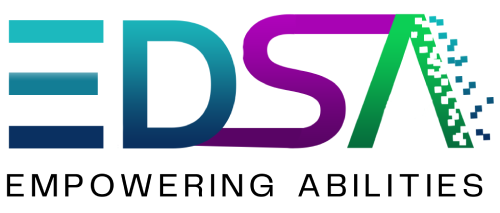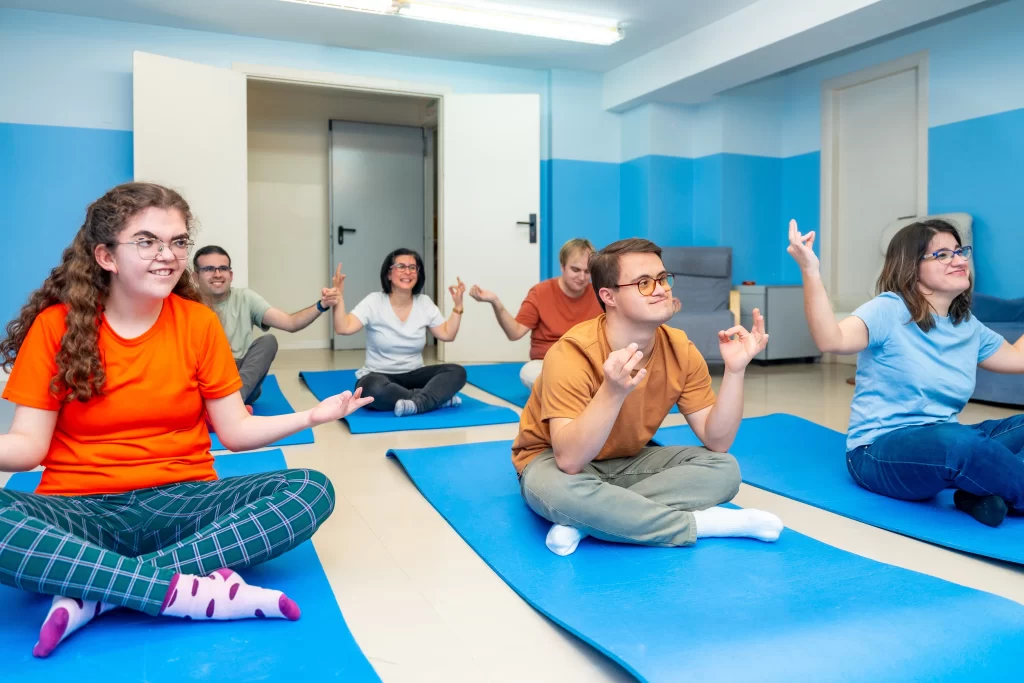First things: what “daily personal activities” actually means
Under NDIS Core Supports (the “Assistance with Daily Life” budget), daily personal activities are the hands-on supports that help you manage essential self-care and routine tasks at home—or in community settings where those tasks occur. Think morning and evening routines, showering, dressing, eating and drinking, moving safely around your home, and preparing to head out. These supports are funded when they’re “reasonable and necessary,” related to your disability, and help you pursue your goals (greater independence, safety, community access, work or study readiness). In short: they’re the everyday, dignity-first tasks that make everything else possible.
Morning routine support: start right, feel safer all day
A good morning sets the tone. Support workers can help with getting out of bed, washing, grooming, dressing, prepping breakfast, and setting up medications or equipment for the day ahead. For some people, that might be 30 minutes to steady the morning rhythm; for others, it could be 1–2 hours covering transfers, showering, and meal preparation. Tip: ask your provider to write a step-by-step routine you can tweak seasonally (e.g., different clothing, hydration reminders in summer).
Showering, bathing, and personal hygiene—done with dignity
Personal care assistance covers bathing or showering, washing hair, oral hygiene, shaving, skincare, and drying. If balance or sensory processing is a challenge, support might include equipment set-up (shower chair, handheld shower, non-slip mats), pacing and prompting, or partial physical assistance. Tip: agree on a respectful script and privacy boundaries (who does what, bathroom door etiquette, towels ready, preferred products) so support feels predictable and dignified.
Dressing and grooming that fit your day’s activities
From fastenings and footwear to hair care and make-up, dressing assistance keeps you comfortable and work/school-ready. For fine-motor difficulties, workers can pre-sort outfits or set up adaptive clothing and shoehorns. For people with fluctuating pain or fatigue, the plan may include “good day/bad day” options. Tip: store regular outfits on a low, open rail or labelled drawers—small environment changes can cut support minutes without cutting quality.
Eating, drinking, and mealtime support
Supports can include preparing or heating simple meals, setting up modified utensils, thickening fluids if recommended, prompting safe eating, and supervising swallowing according to allied health plans. For some, it’s about energy conservation (meal prep earlier in the day, batch cooking); for others, it’s positioning and pacing to reduce aspiration risk. Tip: Request a one-page mealtime profile (textures, risks, red flags, emergency steps) so every worker follows the same safe routine.
Medication prompts and health routines
While prescribing and complex clinical tasks sit outside Core Supports, workers can prompt you to take medication, hand you pre-packed doses (e.g., Webster packs), and record completion. They can also set up equipment (CPAP, nebulisers) as directed, or remind you to complete physio or stretching programs prescribed by allied health. Tip: keep a simple log on your fridge or device; it helps you, your family, and your workers stay aligned.
Mobility, transfers, and positioning—moving safely at home
Transfers—from bed to chair, toilet, shower, or vehicle—are common elements in daily living support. Workers follow your manual-handling plan and use the right equipment (slide boards, hoists) to reduce injury risk for everyone. For people using wheelchairs or walkers, supports can include setting up cushions and footplates, pressure care checks, and repositioning to prevent skin issues. Tip: ask your provider to train all rostered staff on your specific transfer technique; consistency matters more than strength.
Toileting and continence care
Support may include toileting prompts, transfers, changing continence aids, skin checks, and hygiene. Workers can also help manage catheter or stoma care at a basic level, provided they receive appropriate training and follow provider policy (complex tasks may require nursing). Tip: agree on a discreet signal if you want a few minutes alone; privacy and control shouldn’t disappear because support is present.
Evening routine and sleep-ready support
Just as mornings matter, evenings do too. Supports can cover dinner preparation and set-down, showering, skincare, changing into sleepwear, and winding down electronics. Where needed, passive or active overnight support (sleepover or wake shifts) may be funded when disability-related needs make unsupervised nights unsafe. Tip: if anxiety spikes in the evening, design a short repeatable routine (music, lighting, weighted blanket, brief tidy) to help your body recognise “sleep time.”
Household tasks that are part of personal care
Core Supports can also help with household tasks closely linked to self-care—making the bed, laundering clothes and linen, cleaning the bathroom after a shower, setting out tomorrow’s clothes or equipment, wiping benches after meal prep. Larger domestic assistance (whole-house cleaning, yard work) can also be funded where disability makes them impractical. Tip: bundle related tasks (e.g., shower → towel and laundry load → tidy bathroom) in one support window to save time.
Getting “daily personal activities” into the community
Daily personal activities don’t always happen at home. You might need support to manage toileting, feeding, or medication prompts at work, TAFE, day options, or during community participation. NDIS funding can cover personal care in these settings when it’s disability-related and required for you to take part in activities. Tip: write a small “community care card” (toilets you prefer, time windows, any red flags) so workers can support you discreetly when out and about.
How to make Core Supports work harder (without burning hours)
Map your week in plain language
Write your typical day and week on one page: wake time, personal care windows, meals, therapy, community, rest. Then mark where you need hands-on help versus prompts or set-up. This becomes your roster guide and a tool to explain the needs to new workers.
Set time budgets by routine, not by worker
Instead of booking “2 hours with Alex,” book “AM routine (60 min) + meal prep (30 min) + PM routine (45 min).” That structure helps your provider send the right person for the right task and gives you control when swapping shifts.
Lock in safety plans and quick-reference notes.
For transfers, mealtime risks, epilepsy, or diabetes management, keep one-page plans that every worker reads. You’ll spend less time explaining—and more time doing.
Build independence inside support.
Ask workers to fade prompts or break tasks into steps that you can gradually take ownership of. For example, today the worker sets out clothes; next month, you choose from two options; later, you lay out tops while they handle fastenings. This “capacity through routine” approach can free hours for other goals over time.
Coordinate with therapy
If occupational therapy or speech therapy is in your plan, weave their strategies into daily personal activities: e.g., practicing button hooks during dressing, or AAC prompts during breakfast. You’ll progress faster when therapy is lived, not just attended.
FAQs about Daily Personal Activities Funded by NDIS
Is transport a daily personal activity? Transport is usually a separate budget. However, individual care that happens around travel (transfers into a vehicle, toileting before you leave) can be part of daily activities.
Can family be paid for daily personal activities? In most cases, the NDIS won’t fund family as paid carers unless there are exceptional circumstances. Providers (or directly engaged workers) deliver funded support.
What about weekends or public holidays? Support can be delivered any day/time you need it—loading (pricing) may vary by day and time. Plan for consistent rosters.
Can I use my Core for short-term changes (injury, surgery)? Yes—Core is flexible. If your needs temporarily increase, talk to your provider about short-term roster changes and document why.
What if my needs change a lot over the year? Keep notes. At plan reassessment, show how daily personal activities have helped you stay safe, attend work/study, or reach goals. Evidence secures the right level of Core next time.
Choosing the right provider for personal care
Look for teams that:
- Train workers specifically in personal care assistance (manual handling, mealtime safety, dignity, and privacy).
- Offer consistent rostering and a single point of contact for changes.
- Share shift notes with you (and your nominee) so everyone stays aligned.
- Respect culture, language, gender preferences, and privacy boundaries.
- Can coordinate across home, work/school, and community settings.
If you use support coordination or plan management, ask them to help compare providers on responsiveness, staff continuity, and training. A good match is one where you feel safe, heard, and in control.
A simple 2-week action plan to optimise your Core Supports
Days 1–2: Write your weekday and weekend routines; highlight tasks needing help.
Days 3–4: Draft one-page quick guides (transfers, mealtimes, medication prompts).
Days 5–6: Meet your provider to build a routine-based roster; confirm worker training needs.
Week 2: Trial the roster; note where minutes are tight or slack; adjust windows, not goals.
End of Week 2: Lock in a 4–8 week schedule. Save shift notes to track progress and review at your next plan check-in.
The bottom line
Daily personal activities are the foundation of independence and well-being. When you plan them deliberately—linking support minutes to your goals, embedding therapy strategies, and insisting on dignity and safety—you turn Core funding into real results. If you’re ready to put these ideas into practice with a local team that shows up, listens, and adapts, talk to EDSA Disability. They’ll help you tailor Activities Funded by the NDIS to your life—so your days run smoother, your confidence grows, and your goals feel closer, one routine at a time.

